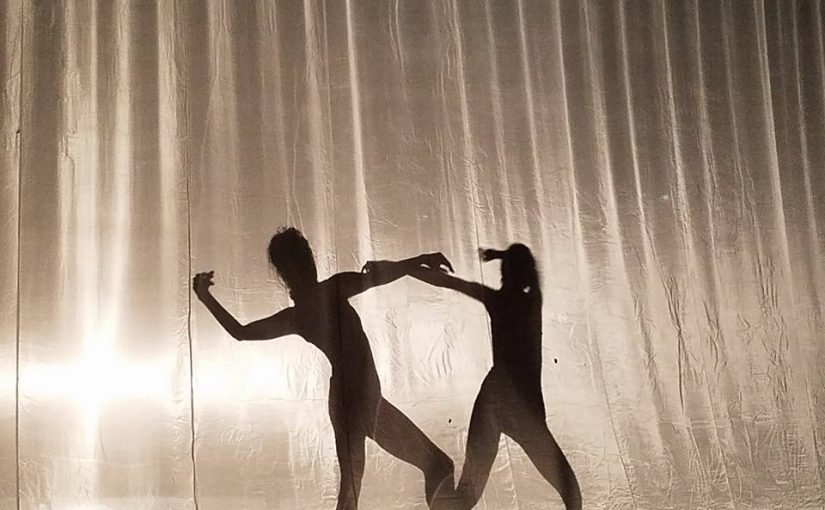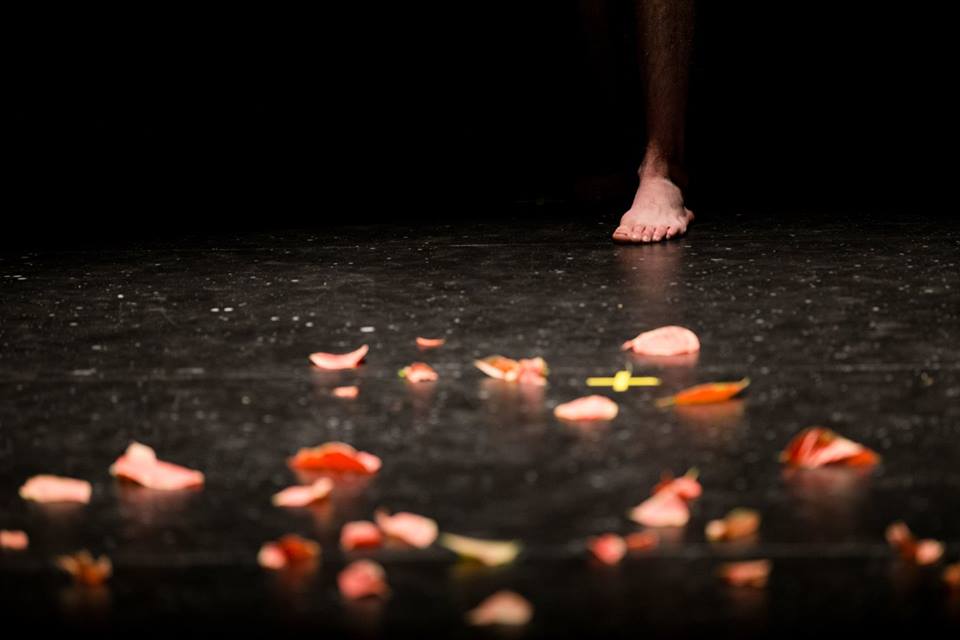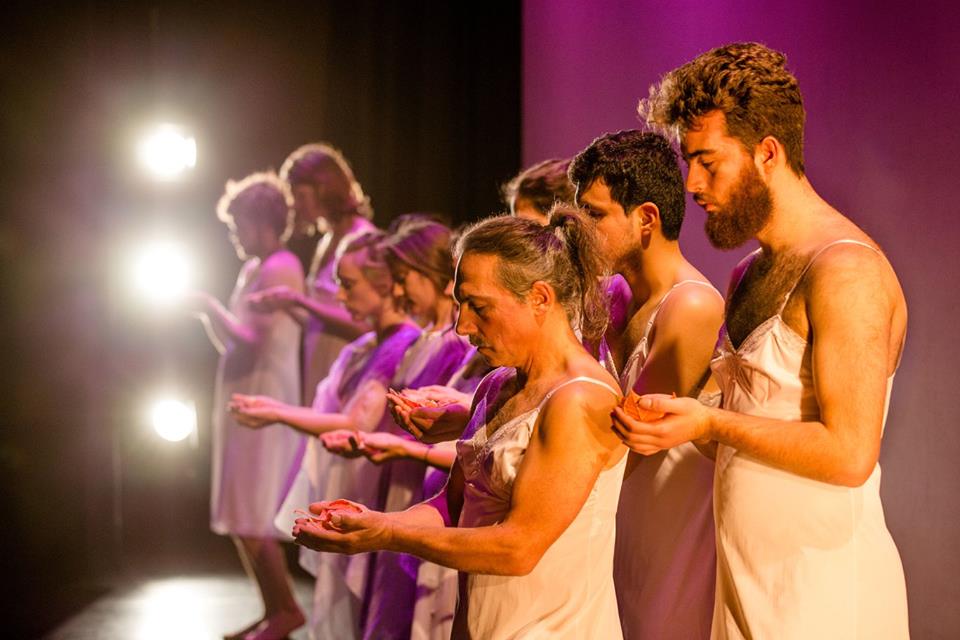Jennifer Diaz
SOS Commodification Processes and Alternatives
Final Self-Narrative Self-Evaluation Assignment
March 12th, 2017
This was my first time being enrolled in a Student-Originated Studies program organized around a weekly class meeting, a day to meet with our professor, Dr. Sarah Williams, and the rest of the week was dedicated to work on my own in-program Individual Learning Contract project.
Overall I discovered three main lessons: 1) how to stabilize and strengthen the microbiota in your gut using bacteria and cultures, 2) plant life that can thrive in the climate of the pacific north west that also aid in the regulation of coritozol, 3) I explored embodiment through dance, trauma, and healing through participating in a multimedia Butoh-inspired performance titled The Earth Speaks and studying Ecopsychology.
Similar to how Tompkins reflects on her work on hunger and embodiment, and looking at slavery as an injustice that is stuck in the body politic in her novel Racial Indigestion, I too began to wonder where race and digestion met and how the stress of racism affected those who felt the pressure of it. I explored the gut and foods that can heal indigestion, and through this class ended up discovering how complicated the relationship between food and the self is, and how common digestive disorders are in America. Like LaDuke when she writes “It is said that change does not come without struggle,” my own journey this quarter led me to the realization that healing is personal as well as collective, and both must be given attention and respect. This quarter also led me back to myself, back to my own body and my own traumas, and brought hope and healing through a time of great change and personal unearthing.
I had different sensations learning from each book that we read for seminar. Kyla Wazana Tompkins’s Racial Indigestion: Eating Bodies in the 19th Century is possibly the most intricate, thoughtful, and detailed work that I have read in my college experience. Between her manipulation of language, use of long and winding metaphors, her thesis of eating embodying racial indentify and sexual desire, and her recognition of exploitive food practices and how our culture surrounding food needs to shift, this book was the most challenging and intriguing read out of the three. In weekly seminar preparation writings I explored the places where food, place, and identity mingle. My most successful response was to chapter 3, where I put Tompkins work into conversation with Newman and LaDuke and two contemporary news items: one about missing and murdered Native Women, and the other about stress and the digestive system.
Tompkins advocates for a new way of looking at “food studies” and calls this new lense “critical eating studies.” This new idea direct the focus of our SOS. It enabled us to view the mouth as a site of eating and talking, not only consuming. We were templates of experience and reflections of the things we eat and say. We had weekly tasting labs where we experienced foods related to the themes in racial indigestion along with tea tasting labs. The food tasting lab added to my learning experience by reminding me of the power of storytelling. The knowledge that we were exposed to during these tasting labs changed the way I accepted and reacted to the food. When I knew the origins or the historical context of the food I was eating, my experience with the food felt fuller, more meaningful, and sometimes created dissonance within me. The tea tasting labs reminded me of the importance of coming together and sharing vulnerable space. I was also exposed to the history of Camilla sinensis and all the ways we enjoy it today.
The title of my in-program Individual Learning Contract was Naturally Nourishing: Healing psychosomatic experience through culinary arts and embodiment. My learning objectives, corresponding activities, and outcomes were to explore the current policies and societal structures that interrupt an individual’s opportunity or access to real food in Thurston County. I helped name a Thurston County education and outreach intiative about local food, distributed food at the Thurston County Food Bank and got to know members of the community who play roles in the local food system. My second learning objective was to research the connection between mental health and digestive health, and how to create a healthy eco-system in our bodies. I went to workshops and read books exploring food as medicine and learned how to make dairy and water kefir. My third learning objective was to become familiar with research that has been done on the connection between human health and the ecosystems health, and how food and dance could relieve stress, tension, or trauma. The outcomes for this objective were the Butoh performance, which was a performative mediation on our bodies inherent connection to the earth and to each other. The performance invited those who witnessed to contemplate how industrialization and capitalization of the body and the earths body fuels the illusion that we are separate from the whole web of life, and how our disregard to this connection and our influence on the environment and on each other does indeed have consequences. In a society which views the body as a mechanism to be trained and the earth as a resource to be exploited, this performance was an attempt to be reminded us of our fundamental wholeness and interconnection. Inspired by bothButoh dance and Eco-Feminist philosophy, the performance facilitated deep thought about the harmful split between the earth and human society that has resulted from patriarchal capitalism, and how the split might be healed by the feminine instinct for nurture and holistic knowledge of the earth’s rhythms. I wrote e-journal posts about my findings and had a personal food journal where I recorded what I ate, how I felt during the preparation and during ingestion, how I moved that day, and any notable sensation in my body that day.
For my 2 class presentations I discussed the benefits of borage, kefir, and a quick description on the origins of Butoh. I showed the class my images and findings that are also posted on my e-journal.
In summary, I learned that stress can be alleviated, but the stressor needs to be addressed as well. Dairy kefir is very easy to keep up with, but it is still a delicate task. Dairy kefir changed the way I was digesting, and even in the middle of winter while being under a spell of depression, I was able to feel okay in my body because of the nutrition and regulation it brought to my digestion and over all health. I learned about ecopsychology and the way dances have been used to reflect, change, and heal different people. On reflection, what I learned matters because excessive stress disturbs and ultimately destroys the body. Being able to regulate and release stress is beneficial for short and long term survival.
Most of my work was documented on my project e-journal that was a part of the SOS wordpress website. The work I am most proud of surrounds learning about kefir and keeping my own kefir alive. Some skills I learned from working with WordPress to create an e-portolio include using zotero, addressing large audiences via the internet, and how to keep my writing academic and also relatable.
Standing at the tenth week, I now know how to think critically and vulnerably, both by myself and in groups, about food and identity. I was reminded that I can not get so lost in my pleasure that I forget about the “cost” of that pleasure.
This quarter has encouraged me to not be afraid of communicating, no matter what the mode of communication is. This quarter has prepared me for next quarter through the exposure of creative academic writing (Tompkins) and personal storytelling (LaDuke.) This class has reminded me that we all have to eat, and because of thise we all have a deep relationship to food, the earth, and each other because of this need. I learned about the discipline and motivation needed to complete individual studies. Overall, it was not the best fit for me because of my mental state. I am someone who benefits from clear maps and boundaries when it comes to learning, but I learned great lessons, added three mind-altering books to my shelf, and now carry the understanding and gratitude for food and all of the people who have are a part of the system that nourishes me.
Proposed Credit Equivalencies: 11 total of 16 attempted/registered
4- Commodification Processed: Racism and Sexism in Food Systems
2- Critical Eating Studies: Tasting Labs
3- Individual Learning Project
2- Creative and Expository Writing: WordPress ePortfolio


